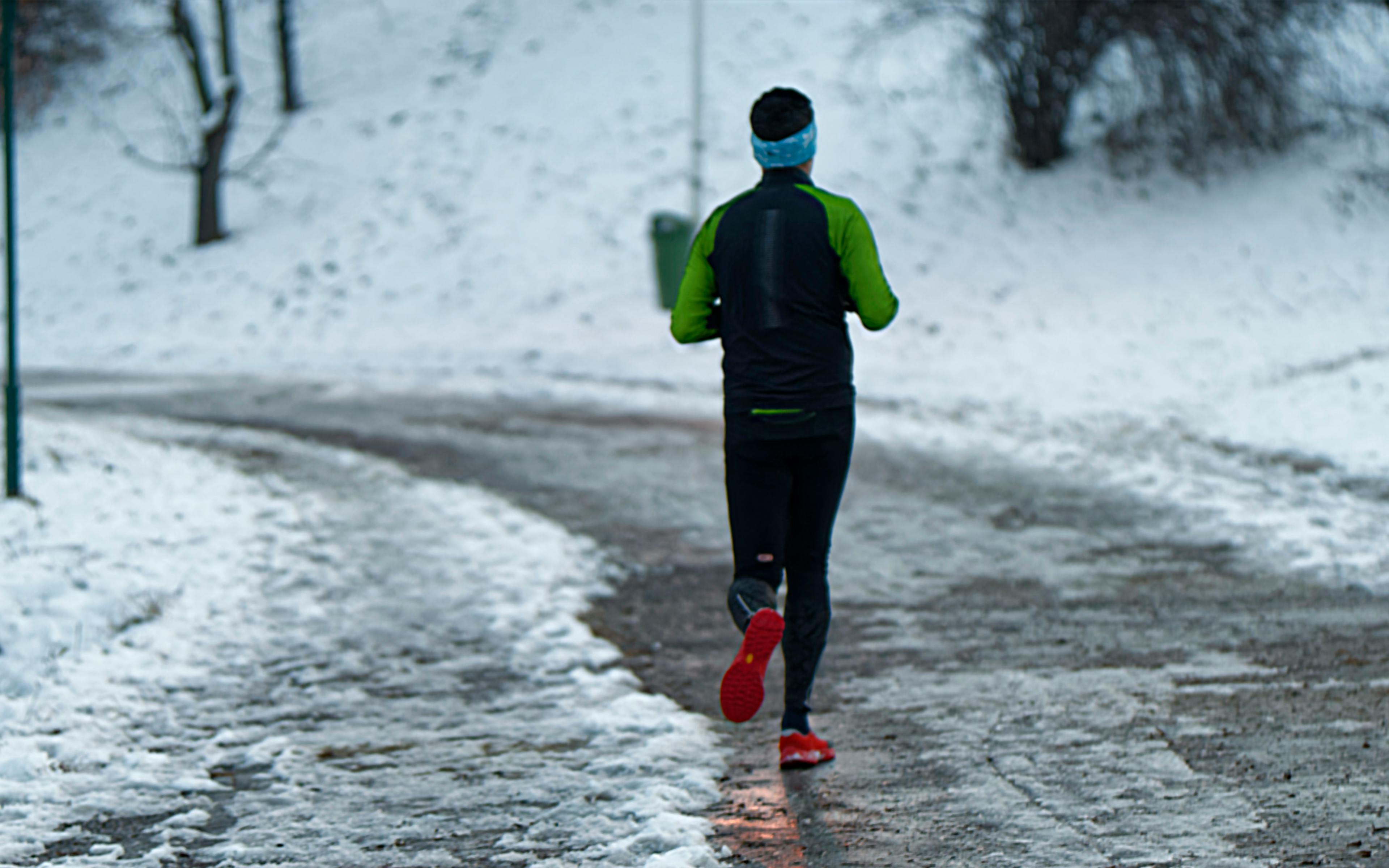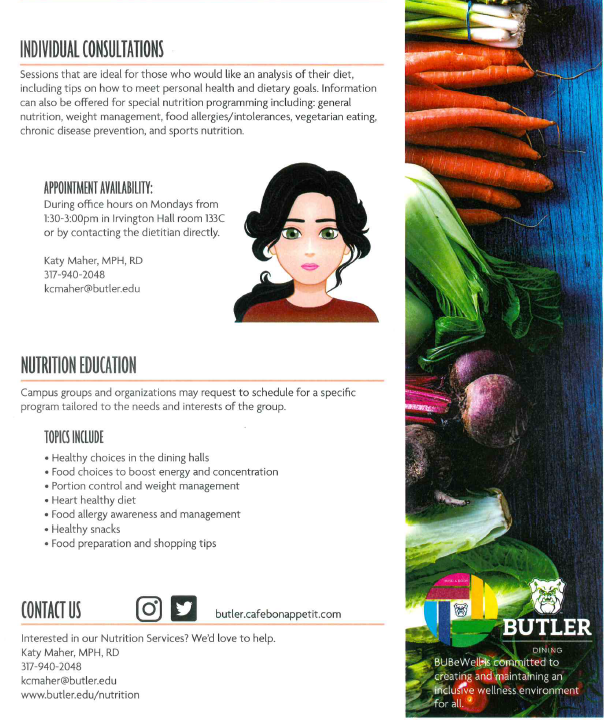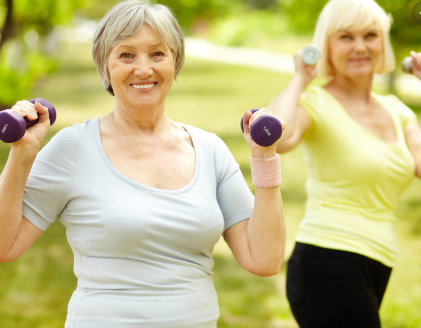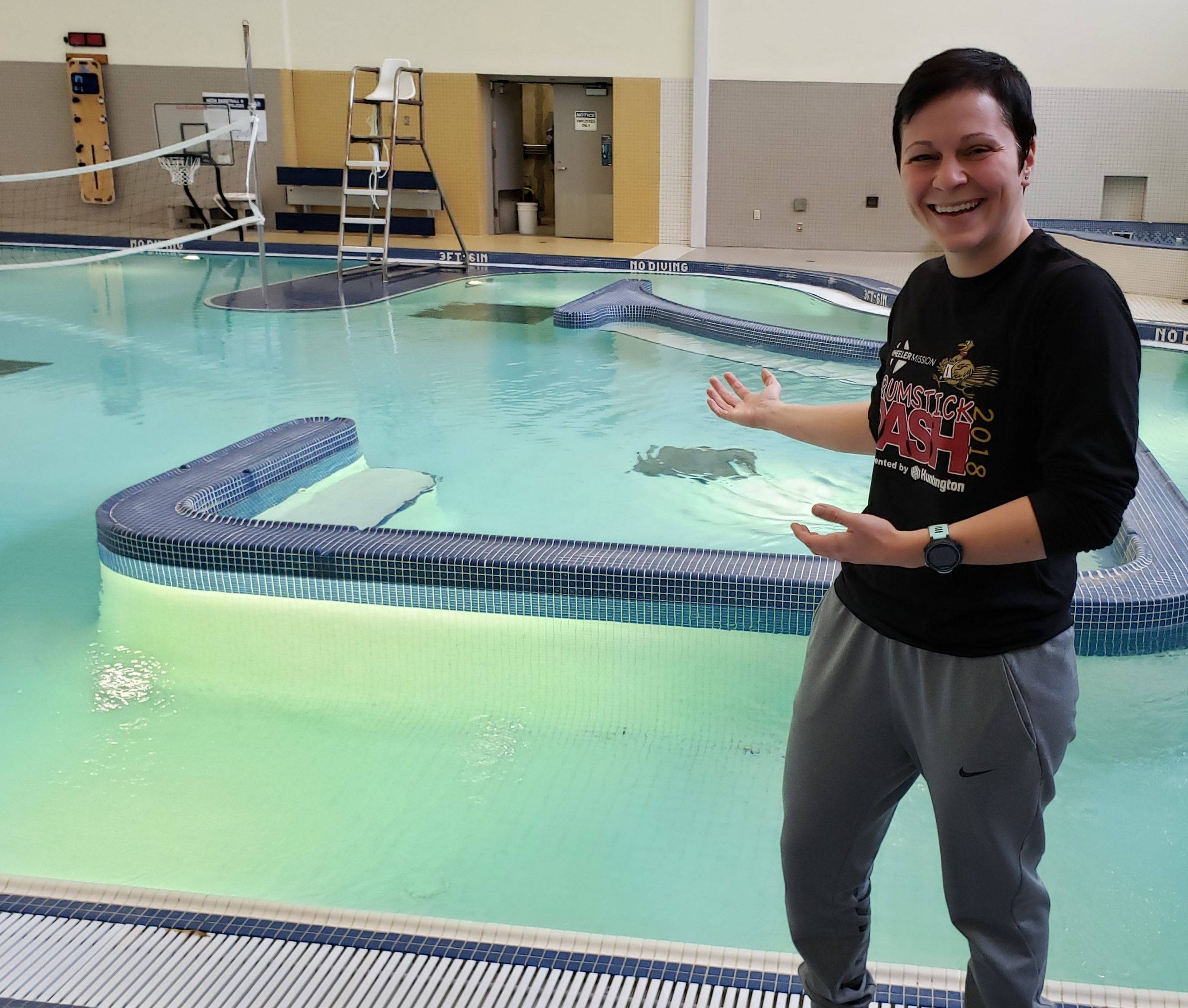
www.runnersworld.com/runners-stories/a20865567/best-running-songs/

National Wear Red Day® – Friday, February 7, 2020
On the first Friday of every February, which is designated as American Heart Month, the nation comes together, igniting a wave of red from coast to coast. From landmarks to news anchors and neighborhoods to online communities; this annual groundswell unites millions of people for a common goal: the eradication of heart disease and stroke.

Ask your doctor to check your blood pressure and cholesterol.
Stop smoking, lose weight, exercise, and eat healthy.
It’s up to you. No one can do it for you.
We think it won’t happen to us, but heart disease kills one of three women.
Make healthy food choices for you and your family.
Teach your kids the importance of staying active.
Tell every woman you know that heart disease is our No. 1 killer.
The Nation Goes Red in February
Complimentary Consults for full-time faculty & staff!

Dec 6, 2019

A study from researchers at the National Institute of Health (NIH) found that women who used permanent hair dye and chemical hair straighteners had a higher risk of breast cancer than women who didn’t use them. The study was published December 4, 2019 in the International Journal of Cancer.
This is the latest study to look at possible links between cancer and chemical hair products. Previous studies have had mixed results. The NIH study looked at data from 46,709 women in the Sister Study. Participants are American women who did not have cancer when they enrolled in the study but who had a sister diagnosed with breast cancer.
Researchers observed that women who regularly used permanent hair dye during the year before they enrolled in the Sister Study had a 9% higher risk of developing breast cancer. Women who used semi-permanent or temporary hair dye had little or no increased risk.
Among African-American women, using permanent dyes was associated with a 45% increased risk of breast cancer, compared with a 7% increased risk for white women. The study authors suggest this may be because hair products marketed to black women contain different chemicals than those marketed to white women. Among black women (but not white women), using the products more often was also linked to a greater increase in risk.
“Researchers have been studying the possible link between hair dye and cancer for a long time, but results have been inconsistent,” said corresponding author Alexandra White, PhD, in a statement. “In our study, we see a higher breast cancer risk associated with hair dye use, and the effect is stronger in African-American women, particularly those who are frequent users.”
Straightener use was also linked with a higher breast cancer risk. Use of straighteners was much more common among black women than white women.
Researchers found an association between permanent hair dye use and women getting breast cancer, but they did not conclude that using permanent hair dye causes breast cancer. More and other types of research are needed.
Also, the results of this study need to be viewed in the context of other studies that have looked at this issue. Previous studies have had mixed results: some have shown a possible link between hair dyes and breast cancer, but others have not. This means there’s still no clear answer for women who are concerned about a possible increase in the risk of breast cancer (or other cancers) from coloring their hair.
Co-author Dale Sandler, PhD, said in a statement, “We are exposed to many things that could potentially contribute to breast cancer, and it is unlikely that any single factor explains a woman’s risk. While it is too early to make a firm recommendation, avoiding these chemicals might be one more thing women can do to reduce their risk of breast cancer.”
The American Cancer Society recommends women who want to lower their risk for developing breast cancer make lifestyle changes that have strong evidence showing they have an effect.

1. Remove “weight loss” as an actual goal!
Chris McGrath said that while this tip may seem crazy, “weight loss is too abstract and subjective to be stated as a legitimate goal.” Weight loss is an outcome that cannot happen without action, so your goals need to include specific actions that will lead to weight loss.
Jonathan Ross also said that goals should be small and attainable. This will save willpower because rather than focusing on the negative — fighting the urge to say “no” to certain foods and behaviors — accomplishing smaller, tangible goals will “build confidence, which builds hope, which builds consistency.”
2. Train like the celebrities and use a process called Internal Overload
Tanya Becker’s gym regularly hosts celebrities like Kelly Ripa. What does her gym provide that keeps these celebrities looking good and coming back? “At Physique 57, we do a combination of strength training, cardio and stretching using a process we call Internal Overload,” Becker said. “We work all your major muscles [in these full body workouts under an hour] to the point of fatigue and then stretch them for relief.” The result of this work is a “lean, supple, toned body.”
Internal Overload also provides these results quickly in varied classes, so celebrities never get bored and keep coming back.
3. Real Improvements — and the antidote to boredom — lie outside your comfort zone
Several pros suggested getting outside of your comfort zone to see results and keep boredom away. “Never let yourself get comfortable in your routine,” Riana Rohmann said. Just as we don’t go to school and stay in the third grade every year, we shouldn’t continually work out at the same level, she said.
Douglas Brooks said that mixing your routine up could mean taking a session or class you’ve never taken before. “This ‘change-up’ keeps you fresh mentally and physiologically.”
Todd Durkin said, “challenge yourself at a deep level at least three time per week.” The workouts don’t even have to be long, but “make sure you diversify your workouts so they don’t get stale and boring.”
4. Ripped abs aren’t made on the floor!
Get off the floor! Shannon Fable and Nancy Naternicola said that too many people try to get those tight abs by doing thousands of crunches on the ground. This tends to actually overwork your abs. “Instead, make sure your core is engaged during your strength, balance and cardio workouts,” Naternicola said.
“Workouts that ask you to balance, flow and move in a variety of positions will do more for you [than crunches],” Fable said. “Core work is less about feeling the burn and more about learning how to move efficiently from the inside out.”
Try using a BOSU Balance trainer or the smaller, space-saving Balance Pod to create instability that will challenge your core even more.
5. Incorporate play! Give every workout an element of playing hard (like when you were a kid)
“Most of my workouts are 30 to 45 minutes max with non-stop movement that incorporates high-intensity and fun challenges,” Klinedinst said. “This means adding in competition, partner drills, cutting-edge equipment and even games or sports.”
She said she did a tennis workout with a friend last week and every time either one of them made a mistake, they had to do 10 push-ups, lunges, and sprint to the center of the court and back as punishment. This minimized mistakes while also giving Klinedinst the best workout!
6. The outside world is your gym.
Doug Balzarini’s favorite weekly training session has been, as he called it, his “play day.” He goes outside to a local park or a beach and moves using what’s there – literally. “I’ll use my surroundings and my creativity to craft the session for the day.” This may include climbing trees, but his clients – professional athletes and those stuck in cubicles every day – have all benefitted from moving outside.
Douglas Brooks also suggested getting outside and “cross training with the seasons” – running dirt trails, Nordic skiing, Alpine skiing, hiking, and rock climbing – as ways to use the environment to change up workouts.
7. Get to know your feet and find balance.
Intensity can make you feel alive, but taking some time during the week to stretch and work on balance – without shoes – is just as important, Fable said.
It’s easy to forget about the feet that keep us moving, but “growing your posture from your feet can help prevent knee, hip, back and even shoulder pain,” MaryJayne Rogers said.
Some equipment that may help you remember those feet include Power Plate, BOSU, Wobble Board, the Pilates Reformer and Pilates Chair.
8. Welcome massages into your routine.
Recovery will help fuel your intense days and ensure your mind is also in tip-top shape, so welcome those massages! “Recovery is the name of the game, and massage and bodywork is a sure-fire way to help your body – and your mind – relax and rejuvenate,” Todd Durkin said.
And (not that you needed convincing to get more massages) new research shows that those massages really do work – decreasing inflammation while also helping cellular recovery.
9. Forget the reps. Watch the clock.
Don’t spend every workout using sets and reps – you don’t need to practice those counting skills anymore. Instead, like Naternicola does in her own workouts, use a stopwatch! She is incorporating more 30-minute total body workouts to get more out of a short amount of time.
Use your stopwatch during high-intensity interval training, which is a great way to increase the intensity of your workouts and see results in a short amount of time.
10. Train and act like an athlete
Todd Durkin said that everyone should train like an athlete. “Incorporate strength, power and conditioning into all your workouts.” Of course, training like an athlete also includes getting out of your comfort zone and pushing your limits.
Doug Balzarini said that thinking like an athlete is also important. From training a number of professional athletes, he said that a common element all of them share is commitment. “These athletes are truly committed to improving their bodies for their craft,” he said. “If we all had the same level of commitment and drive that these guys had, we would be a much healthier society.”
So commit to be fit, make your health and wellness a priority, and don’t accept the “I don’t have any time” excuse.
www.acefitness.org/education-and-resources/lifestyle/blog/2438/10-fitness-tips-tricks-from-the-pros
Healthier Eating Tips
Stock Up on Local, Seasonal Produce
Consume as many fruits and vegetables as possible daily. Plan your meals around what veggies you are going to eat and enjoy fresh fruit as a snack. Focus on variety, deep rich color, and seasonal produce. Enjoy a mixture of cooked and raw veggies. Don’t forget fermented veggies like sauerkraut. They are loaded with beneficial probiotics.
Use High Quality Fats
Stick to traditional fats like butter, ghee, coconut oil, animal fats, olive oil. Set a goal to consume one to two 3-ounce servings of wild caught cold water fish like salmon, halibut, tuna, and sardines. These fish are a healthful source of long chain omega-3 fats and nutrients such as vitamin D and selenium. Incorporate pasture-raised eggs into your daily diet. Like fatty fish, they provide long chain omega-2 fats and a whole host of essential nutrients. Minimize the use of polyunsaturated cooking oils. These oils are highly unstable and easily oxidized. Oxidized oils can lead to an increase risk of heart disease. Examples are vegetable oil, corn oil, soybean oil, grapeseed oil, and cottonseed oil. Focus on using traditional fats along with newer oils like avocado oil or high oleic sunflower oil. Minimize or avoid partially or fully hydrogenated vegetable oils. These are manmade trans fats are extremely harmful to the body.
Go for Environmentally Responsible Proteins
Focus on wild caught, sustainable fish/shellfish, pasture-raised poultry and eggs, and grass-fed beef and dairy. Incorporate plant-based protein like beans, fermented soy products like tempeh, or meat alternatives made from pea protein. Utilize bone broths in your cooking like when make soups, stews, or sauces. Avoid/minimize corn-fed beef, processed soy and soy products, and heavily processed meats that use nitrites, nitrates, and/or MSG.
Cut Back on Sugar and Processed Foods
Focus on using more natural sugars like honey or maple syrup and use in moderation. When baking, cut sugar amount in half – you will be surprised that you can’t tell a difference. Minimize consumption of highly refined carbohydrates: white flour, white sugar, and sweets. They promote fat storage and cardiovascular disease, perpetuate appetite, and increase risk of type 2 diabetes. Avoid/minimize products containing high fructose corn syrup. It is a highly processed sugar that is made from corn syrup. It is added to a plethora of commonly consumed foods and beverages. And just like white sugar it is linked to serious health issues including diabetes and heart disease.

Ingredients:
• 1 head cauliflower, outer leaves removed or 1 bag Earthbound Organic Riced Cauliflower
• 2 tablespoons ghee or coconut oil
• 3 large eggs, beaten
• ½ cup finely chopped carrots
• 2 tablespoons finely chopped onion
• ½ cup chopped green beans or frozen peas
• ½ cup chopped baby bellas or shiitake mushrooms
• ¼ cup tamari (A Japanese sauce)
• ¼ cup thinly sliced green onions
• Salt
• ¼ cup fermented veggies (I like to add a little spice with kimchi or Cleveland Kraut’s gnar gnar)
Directions:
Break apart cauliflower into large florets. Chop the core into smaller pieces. Working in batches, add the cauliflower to a food processor and process for 30 seconds, stopping to mix in the larger pieces. Continue for 2 to 3 minutes until the cauliflower resembles small pieces of rice. Repeat with the remaining batches. Set aside.
In a large sauté pan over medium-low heat, add 1 tablespoon coconut oil. Pour in the whisked eggs, swirling them slightly to get a thin, even layer on the bottom of the pan. Continue to cook over medium-low until just cooked through. Slide the cooked eggs onto a cutting board and chop into a small dice. Set aside.
Raise the heat to medium-high and add the remaining tablespoon of coconut oil to the pan. Add the carrots and sauté for 4 to 5 minutes. Add the onion, green beans, and mushrooms and sauté for 5 minutes. Add the cauliflower rice and cook for an additional 5 minutes, stirring frequently until lightly browned and cooked through. Add the tamari and mix well for 1 minute.
Turn off the heat and add the cooked eggs and green onions. Mix well, add salt to taste, top with fermented veggies. Serve. Serves 4
January 2020 Green Bean Delivery Newsletter Link:

To prepare for a winter storm you should do the following:
BEFORE
AFTER

ADMISSION
Adults (At the door) $15.00
Adults (Online only) $13.00
Children (Ages 6-12) $3.00
Children (Ages 5 & Under) FREE
DATES & HOURS
Wednesday, January 22: 10am – 8pm
Thursday, January 23: 10am – 8pm
Friday, January 24: 10am – 8pm
Saturday, January 25: 10am – 8pm
Sunday, January 26: 10am – 5pm
Indiana State Fairgrounds & Event Center

Our own, Leah Weprich, Assistant Director of Recreation & Wellness, Aquatics & Operations, Butler University welcomes all faculty and staff to come water-walking, now free at the Health and Recreation Complex (HRC). Water jets provide a gentle current and resistance that builds strength. All full-time faculty and staff have free access.
Resistance without weight
Pool exercise builds your strength in much the same way as do weight machines at a fitness club or flexible rubber tubing you might use at home. “You need to look at the pool as a giant resistance machine,” says Carol A. Kennedy-Armbruster, MS, a water exercise specialist and instructor in the kinesiology department of the School of Health, Physical Education, and Recreation at Indiana University in Bloomington, Indiana.
“These exercises are awesome for anyone to do,” Kennedy-Armbruster says.
Water also soothes and massages with light pressure (called hydrostatic pressure) while it helps strengthen. That safe, therapeutic environment makes pool exercise good for athletes and others recuperating from sports injuries or illness and for those who need to eliminate joint stress. The calm movement of pool water soothes and relaxes the spirit as well.
Getting started
If you have health concerns, check with the water exercise instructor (if you’re taking a class) and your health care provider to make sure the activity is appropriate for you. Start your pool workout in water depth that matches your swimming ability. Never rely on a buoyancy device to keep you safe in water that’s too deep for your skills.
That said, you don’t need much equipment to work out in water—just a bathing suit and, perhaps, water shoes (pool walking can cause sore feet from rough bottom surfaces). She also recommends not adding strength-building gear such as webbed gloves and water weights until you’ve spent four to six weeks doing pool exercises and getting used to the resistance of the water.
Water Walking 101
If you are accustomed to walking on land for exercise, get ready to slow things down in the water. In pool walking you have to decrease your walking speed by one-third to one-half of what it is on land.
“That is because of the viscosity of the water,” she says. “You have to slow down your movement in order to keep the correct form.” As your strength increases, you can progressively increase your pace. “It will make land walking a lot easier,” she adds.
Waist-high water is best for water walking.
Starting:
HRC AQUATIC CENTER
Monday–Friday:
6:00 AM–8:30 AM
11:00 AM–1:00 PM
3:00–9:00 PM
Saturday–Sunday:
Noon–6:00 PM
www.healthywomen.org/content/article/lose-weight-water-workouts